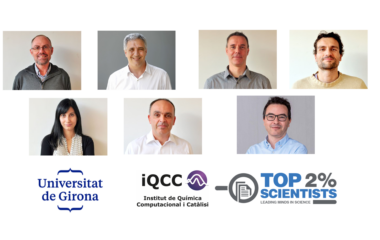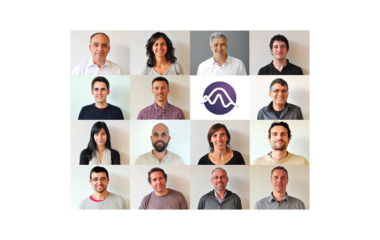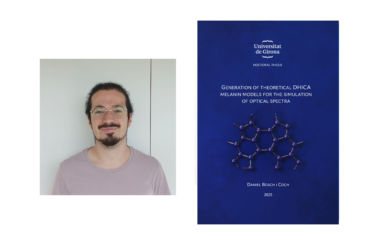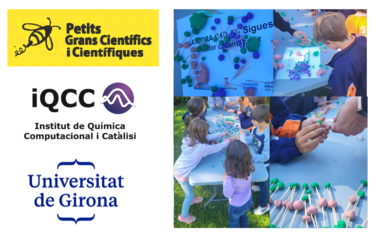- sec.iqcc@udg.edu
- +34 972 41 83 57
Blancafort, Lluís
Excited States and Non-Adiabatic Processes
Contact info:
Dr. Lluís Blancafort
lluis.blancafort@udg.edu
Tel. (+34) 696 89 81 52
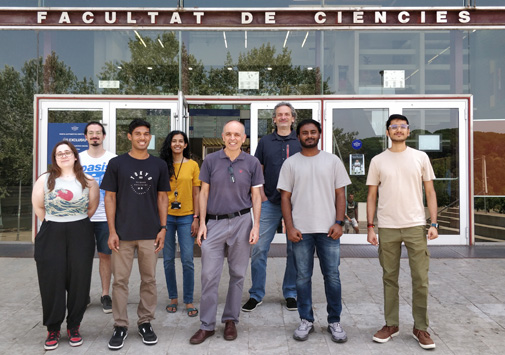
Selected publications
Xueqing Wang, Lilia Kinziabulatova, Marco Bortoli, Anju Manickoth, Marisa A. Barilla, Haiyan Huang, Lluís Blancafort, Bern Kohler, Jean-Philip Lumb
Indole-5,6-quinones display hallmark properties of eumelanin
Nat. Chem., 2023, 15, 787-793
DOI: 10.1038/s41557-023-01175-4
Daniel Bosch, Jun Wang, Lluís Blancafort
Fingerprint-based deep neural networks can model thermodynamic and optical properties of eumelanin DHI dimers
Chem. Sci., 2022, 13, 8942-8946
DOI: 10.1039/D2SC02461F
Jun Wang LB, Lluís Blancafort
Stability and optical absorption of a comprehensive virtual library of minimal eumelanin oligomer models
Angew. Chem. Int. Ed., 2021, 60, 18800-18809
DOI: 10.1002/anie.202106289
Maria A. Trachsel, Susan Blaser, Simon Lobsiger, Luca Siffert, Hans-Martin Frey, Lluís Blancafort, Samuel Leutwyler
Locating Cytosine Conical Intersections by Laser Experiments andAb Initio Calculations
J. Phys. Chem. Lett., 2020, 11, 3203-3210
DOI: 10.1021/acs.jpclett.0c00779
Rachel Crespo-Otero, Quansong Li, Lluís Blancafort
Exploring Potential Energy Surfaces for Aggregation‐Induced Emission—From Solution to Crystal
Chem. Asian J., 2019, 14, 700-714
DOI: 10.1002/asia.201801649
Dr. Lluís Blancafort
Research overview
Photochemistry and photophysics
We focus on relevant applications in biology, chemistry and materials, including:
– Biological chromophores: DNA nucleobases, GFP chromophore, coelenteramides
– Photochemical reactions: diazo-based switches, Wolff rearrangement, excited state hydrogen transfer
– Aggregates: AIEgens, melanin
– Photocatalysis on semiconductors
– Extended conical intersection seams
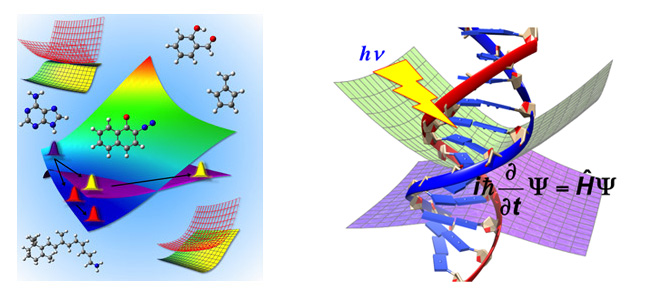
Melanin
Melanin is the biopolymer responsible for protection against harmful light action in living beings. In this line we model its photochemical and photophysical properties, starting from the oligomeric components and moving up to small aggregates, nanoparticles, and large melanosomes. Research funded by Mel.Photo.Protect Marie Sklodowska Curie IF of Jun Wang.
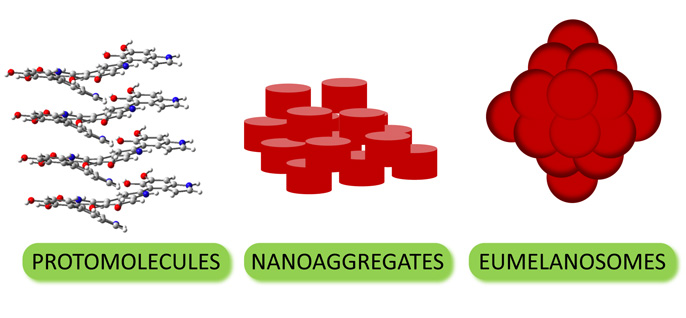
GADOLINIUM-BASED PHOTOSENSITIZERS FOR PHOTODYNAMIC THERAPY
In this project we model the photophysics of new Gd-based photosensitizers with the aim of developing a new hybrid technology for treatment of deep lying tumours, combining neutron-activated and photodynamic therapy. Research funded by FRINGE FET-OPEN project.
AGGREGATION INDUCED EMISSION
Aggregation induced emission (AIE) is an important property of luminescent molecules, since it facilitates their use as luminophores in optical applications. We have introduced the Restricted Access to a Conical Intersection model to explain the behavior of AIEgens in solution and are currently developing approaches to model the photophysics of AIEgen aggregates and crystals.

PHOTOCHEMICAL APPROACH TO PHOTOCATALYSIS ON SURFACES
In this line we are pioneering the combination of periodical calculations with a photochemical approach to explain prototypical cases of photocatalytic reactivity (H2O and CH3OH on TiO2). Our approach considers different excitonic configurations and allows to directly assess the probability of charge recombination.

EXPERIMENTAL COLLABORATIONS
– Ben-Zhong Tang (Hong-Kong University of Science and Technology): AIEgens
– Samuel Leutwyler (University of Bern): Cytosine derivatives
– Stephen R. Meech (East Anglia University) GFP chromophore derivatives
– Bern Kohler (Ohio State University): Melanin components
– Germano Giuliani (Università degli Studi di Siena): Coelenteramides
– Asier Longarte (Euskal Herriko Unibertsitatea): N-heterocycles
People
Principal Investigator
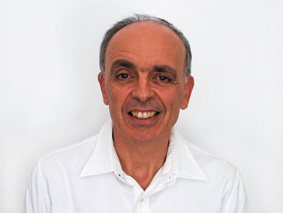
Lluís Blancafort
Prof. Agregat
Staff and Postdocs
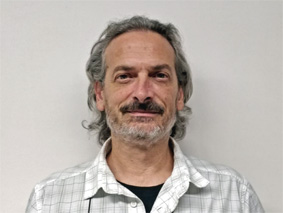
Germano Giuliani
Visitant Professor
Supervisor:- Ll. Blancafort
PhD and MACMoM students
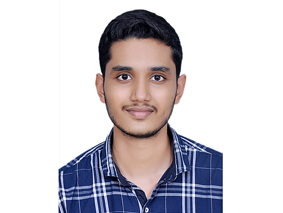
Abhishek Nair
PhD Student (FI)
Supervisor:- Ll. Blancafort

Anju Manickoth
PhD Student (FI)
Supervisor:- Ll. Blancafort
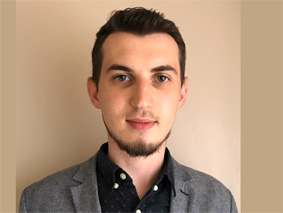
Denis Diatlov
PhD Student (FPI)
Supervisor:- Ll. Blancafort
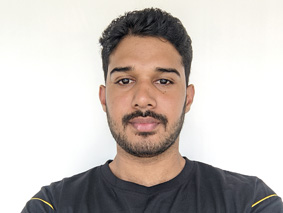
Gopi Krisnan Ravindran
Supervisor:- Ll. Blancafort
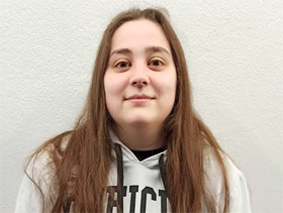
Judit Gálvez
PhD Student
Supervisor:- Ll. Blancafort
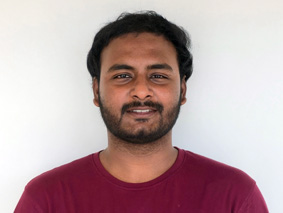
Visvesvarar Pitchai
PhD Student (IF-UdG)
Supervisor:- Ll. Blancafort
Funding
MCIU Proyectos I+D
Researcher: Dr. Lluís Blancafort
Reference: PID2022-138062NB-I00
Funding: 131.250 €
Period: 01/09/2023 – 31/08/2026
Other projects
Researcher: Pedro Salvador and Lluís Blancafort
Funding: Full site-license
Period: –
Collaborations
Quansong Li – Beijing Institute of Technology (China), collaboration with Lluís Blancafort.
Ben-Zhong Tang – Hong-Kong University of Science and Technology (China), collaboration with Lluís Blancafort.
Theodossis A. Theodossiou – Oslo University Hospital (Norway), collaboration with Lluís Blancafort.
Synthetica AS, Norway – Synthetica AS (Norway), collaboration with Lluís Blancafort.
Miguel Angel Miranda – Universitat Politècnica de València (Spain), collaboration with Lluís Blancafort.
Sam Leutwyler – University of Bern (Switzerland), collaboration with Lluís Blancafort.
Stephen R. Meech – University of East Anglia (United Kingdom), collaboration with Lluís Blancafort.
Bern Kohler – Ohio State University (United States), collaboration with Lluís Blancafort.
News
Seven IQCC researchers have been included in Stanford University global list of 2% top scientists
The standardized citation metric analysis published by Ioaniddis (popularized as Stanford University global list
IQCC Science Slam 2025, October 8th 12:30h
Since 2015 the IQCC is organizing a Science Slam. On Wednesday October 8th the IQCC
PhD defense Daniel Bosch i Coch
On 28th of July will be the defense of the doctoral thesis of Daniel Bosch
Petits grans científics i científiques 2025 at IQCC
Every year in May since 2008 is organizing the Ciència en equip – Petits grans científics

